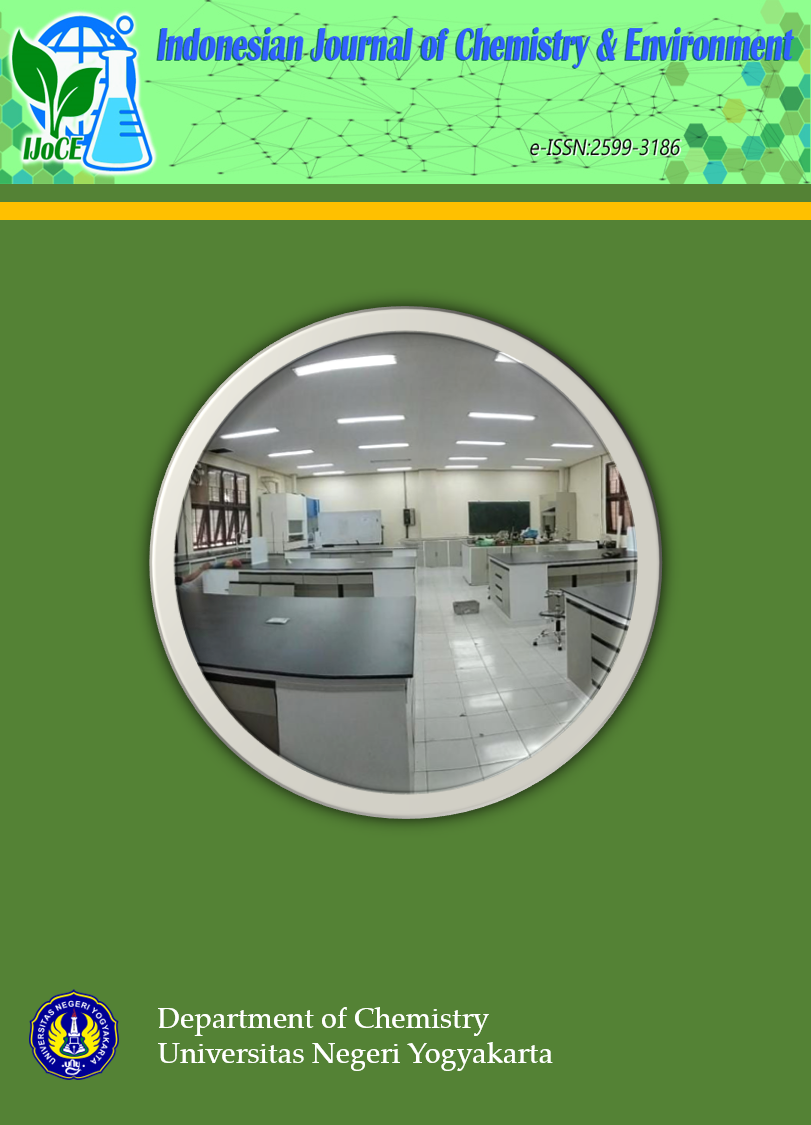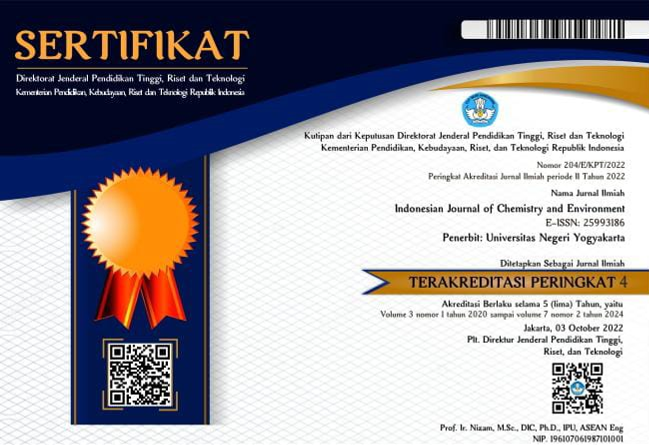Investigation of Structure and Magnetic Properties of Polycrystalline La0.7Ba0.21Ca0.09Mn1-xNixO3 (x=0.1, 0.2, 0.3) by Sol Gel Method
DOI:
https://doi.org/10.21831/ijce.v3i1.40817Abstract
Polycrystalline La0,7Ba0,21Ca0,09Mn1-xNixO3 (x = 0,1; 0,2; 0,3) have been synthesized using sol-gel method, the precursors material from pro analysis products. Samples had characterized by XRD, SEM, and VSM. The result of refinement from XRD pattern shown that all materials had single phase with the lattice parameter a and b had decreased with increasing Ni+3 ion and had a rhombohedral structure along with R-3c space group. The materials had nanoparticle distribution particle size based on measurement by SEM. Hysteresis loop shown that the samples La0,7Ba0,21Ca0,09Mn1-xNixO3 (x = 0,1; 0,2; 0,3) are soft magnetic material. Moreover, the increase of Ni+3 ion gave an impact about the magnetization decreasing from the materials which shown by the decreasing of magnetic saturation value.Downloads
Published
2021-05-19
How to Cite
[1]
Prasetyo, P. 2021. Investigation of Structure and Magnetic Properties of Polycrystalline La0.7Ba0.21Ca0.09Mn1-xNixO3 (x=0.1, 0.2, 0.3) by Sol Gel Method. Indonesian Journal of Chemistry and Environment. 3, 1 (May 2021), 13–18. DOI:https://doi.org/10.21831/ijce.v3i1.40817.
Issue
Section
Articles
License
Authors who publish with this journal agree to the following terms:
- Authors retain copyright under a Creative Commons Attribution–ShareAlike License (CC BY SA) that allows others to share: copy, and redistribute the material in any medium or format, Adapt: remix, transform, and build upon the material, for any purpose, even commercially.
- Authors are able to enter into separate, additional contractual arrangements for the non-exclusive distribution of the journal's published version of the work (e.g., post it to an institutional repository or publish it in a book), with an acknowledgement of its initial publication in this journal.
- Authors are permitted and encouraged to post their work online (e.g., in institutional repositories or on their website) prior to and during the submission process, as it can lead to productive exchanges, as well as earlier and greater citation of published work.







